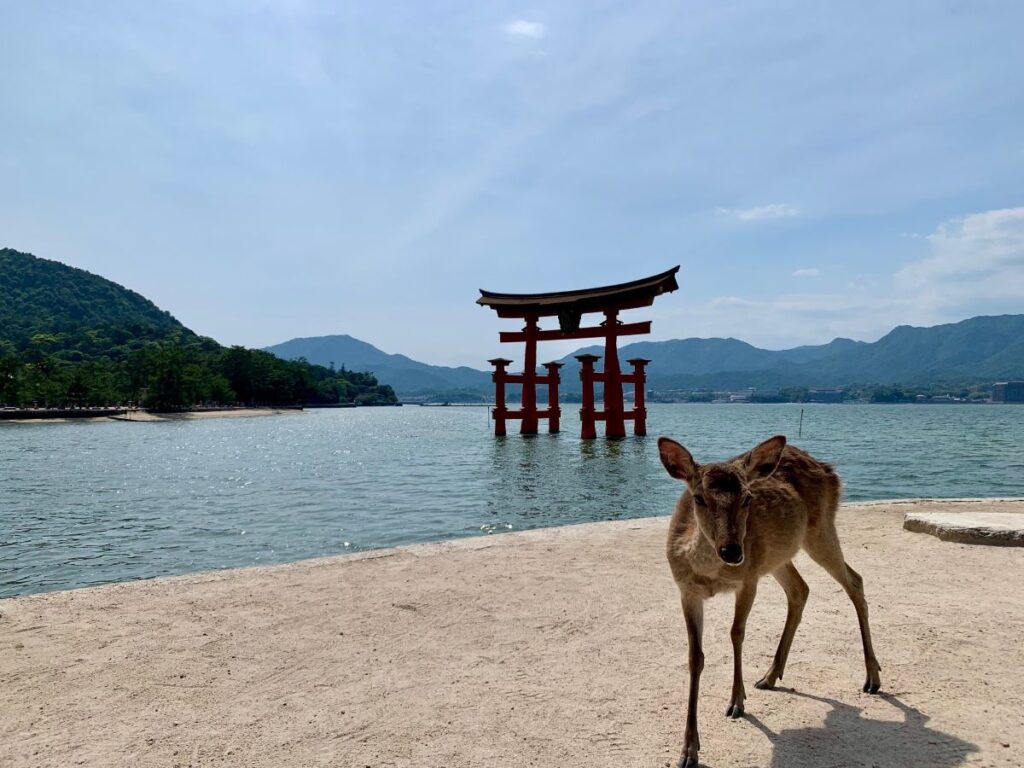
I was fortunate to use the Japan rail pass (JR Pass) on my first trip to Japan, however in October 2023 there was a big price increase.
Now, for most first-timers doing Tokyo and Kyoto (plus Osaka or a day trip to Nara), the national JR pass no longer saves money after the 2023 rise. You usually need several long shinkansen legs in a week to break even. GBP figures are approximate.
I break down below some of the most typical routes, the cost comparison of the pass Vs single tickets and give you a clear recommendation of if it works for you.
TL:DR Fast decision on if the JR pass will work for you
- If your plan is Tokyo↔Kyoto only → buy single tickets
- If your plan is Tokyo→Kyoto→Hiroshima→Tokyo → usually singles unless you add another long leg.
- If your plan is multi-region (e.g., Tōhoku + Kansai + Kyushu) → the JR Pass can work.
Rule of thumb for first time travellers
- 7 day Pass: Two long legs (Tokyo↔Kyoto/Osaka) are not enough. Add another long hop (e.g., Hiroshima) to get closer.
- 14/21 day Pass: Only worth it if you criss-cross regions often. Occasional trips are cheaper as singles.
Disclaimer: This article may feature affiliate links. If you click these links, and choose to book with that hotel or company, I will earn a small commission at no extra cost to you. I appreciate the support that allows me to continue providing this information
JR Pass prices and what you get
- Ordinary cabin/Green Car (adult):
7-day: ¥50,000 (£250) / ¥70,000 (£350)
14-day: ¥80,000 (£400) / ¥110,000 (£550)
21-day: ¥100,000 (£500) / ¥140,000 (£700) - Children 6–11: half price
- Under-6: free without a seat.
Ordinary cabin vs Green Car
Green cars have bigger seats and quieter cabins. Comfort rises, but the break-even point rises too.
What the pass covers
Almost all JR trains nationwide (think between cities, not in the city, that’s where you need a SUICA), including shinkansen (see Nozomi/Mizuho note below), limited express, rapid and local JR lines.
TOP TIP! Make sure you are fully prepared with my “First time visitor to Japan starter kit”
BREAK DOWN THE LANGUAGE BARRIER: The key phrases to learn and technology to use to make your first trip to Japan easy
HOW TO STAY CONNECTED ON THE GO: The cheapest data and easiest way to make sure you can access everything you need
HOW TO AVOID CURRENCY FEES LIKE A PRO: The best cards for travel and withdrawing cash
22 SMARTPHONE APPS TO MAKE YOUR TRIP EASIER: The ultimate FREE apps to download before you go
SAVE 30-90 MINUTES AT CUSTOMS AND IMMIGRATION : The simple and FREE QR code to speed you through the airport
ETIQUETTE DO’S AND DON’TS FOR TOURISTS : What you need to be aware of on your first time in Japan
Nozomi/Mizuho with the JR pass: how the supplement works
You can ride Nozomi/Mizuho by buying a special ticket per ride on top of your pass. These are the fastest shinkansens that can save time of certain legs of the journey, and some enjoy as they are an experience in themselves.
How much is the extra cost?
Typical one-way supplements: Tokyo–Kyoto ¥4,960 (£25), Tokyo–Shin-Osaka ¥4,960 (£25), Tokyo–Hiroshima ¥6,500 (£32).
How to pay and book the fastest Shinkansen
Buy the special ticket at JR machines or counters in Japan from one month before travel up to departure. You cannot pre-book this supplement online.
When paying the supplement makes sense
Pay it when saving 20–40 minutes meaningfully improves your day (tight tours or connections). Otherwise, my advice is that you just use Hikari/Sakura and avoid the extra cost.
How to check if the JR pass is worth it for your trip
3 steps
- List your long-distance legs.
- Price point-to-point reserved seats for each leg.
- Compare your total with the JR Pass price (add Nozomi/Mizuho supplements if you’ll use them).
The most useful tools for comparing the cost of your trip
TOP TIP! Are you landing into Haneda or Narita? I have reviewed the best transport options to get you into central Tokyo, how long they take, how much they cost and a step by step guide
JR pass cost comparisons for common first-timer routes
Totals use typical reserved-seat fares. Small seasonal differences are normal.
Example A: Tokyo – Kyoto return (3–5 nights in Kyoto)
- Singles: Tokyo→Kyoto ~¥14,170 (£71) + Kyoto→Tokyo ~¥14,170 (£71) ≈ ¥28,000–¥28,400 (£140–£142).
- JR Pass (7-day): ¥50,000 (£250).
- Optional Nozomi both ways: +¥9,920 (£50) in supplements to the singles total.
Outcome: Single tickets win — the pass costs ¥21,600–¥22,000 (£108–£110) more.
Why: Two long legs don’t reach break-even. Nozomi makes singles a bit dearer but still far below the pass.
Example B: Tokyo – Kyoto – Hiroshima -Tokyo
- Tokyo→Kyoto ~¥14,170 (£71)
- Kyoto→Hiroshima ~¥12,000 (£60)
- Hiroshima→Tokyo ~¥19,000–¥19,760 (£95–£99)
Singles total: ~¥45,000–¥46,000 (£225–£230).
JR Pass (7-day): ¥50,000 (£250).
Outcome: Usually singles — the pass is ¥4,000–¥5,000 (£20–£25) more.
Why: Close, but still cheaper to not get the JR pass. Add another long leg (e.g., Hiroshima→Kyoto→Kansai Airport) and the pass would represent better value.
Example C: Kansai loop (Kyoto–Osaka–Nara over 4–5 days)
- Typical hops: Kyoto→Osaka ~¥580 (£3), Osaka→Nara ~¥820 (£4), others similar.
Singles total: usually ~¥2,000–¥4,000 (£10–£20) for a simple loop.
JR Pass (7-day): ¥50,000 (£250).
Outcome: Regional pass or singles win — the national pass is ≥¥46,000 (≥£230) more.
Why: Short, cheap legs. A Kansai-area pass often adds convenience without overspend.
Summary comparison table of popular Japan routes
| Itinerary | Singles total (¥ / £) | 7-day JR Pass (¥ / £) | Outcome | Notes | |
| Tokyo–Kyoto return | ~¥28,000–¥28,400 (£140–£142) | ¥50,000 (£250) | Singles | Two long legs aren’t enough | |
| Tokyo→Kyoto→ Hiroshima→Tokyo | ~¥45,000–¥46,000 (£225–£230) | ¥50,000 (£250) | Usually singles | Add another long leg to tip to pass | |
| Kansai loop (Kyoto–Osaka–Nara) | ~¥2,000–¥4,000 (£10–£20) | ¥50,000 (£250) | Regional/singles | Short hops; area pass often best |
TOP TIP! Stuck on what month to go to Japan? – my detailed guide breaks down the best months for weather, crowds, costs and festivals
When a regional pass is better than the JR pass or single tickets
Choose a regional pass if you plan to stay mostly in one area. I personally recommend these to bridge the gap between single tickets and the whole JR pass saving you money. Click the links of the regions for full pricing, details of what is covered and to reserve your ticket.
Kansai (Area / Wide)
Best for Osaka, Kyoto, Nara, Kobe day trips; some versions include Haruka to/from KIX.
Kansai–Hiroshima Area
Good if you base in Kansai and add Hiroshima/Miyajima (Sanyō Shinkansen access included on eligible sections).
Hokuriku Arch
Ideal for Tokyo⇄Kanazawa⇄Kyoto/Osaka via the Hokuriku route; skip the busy Tōkaidō corridor.
JR East (Tōhoku)
Good for Tokyo bases visiting Sendai, Aomori, or Nikkō.
JR Hokkaidō
For Sapporo and northern routes.
Does the JR pass cover my trip from the airport?
Narita Express (N’EX) and Kansai Airport Express Haruka are JR limited express services and are covered by the pass.
Summary table of what the JR pass covers
| Included | Details |
| JR shinkansen (Hikari/Kodama/Sakura etc.) | Nationwide on JR lines |
| Limited express, rapid, local JR trains | Across regions |
| Tokyo Monorail (Haneda↔Hamamatsuchō) | Included |
| JR West Miyajima Ferry (Miyajimaguchi↔Miyajima) | Included |
| Some local JR buses | Varies by route |
| Excluded/Extra | Details |
| Nozomi/Mizuho | Allowed with paid supplement per ride |
| Most subways and private railways | e.g., Tokyo Metro, Keihan, Hankyu |
| Certain third-sector lines | Limited exceptions only |
Still want a JR Pass? Here’s how to buy and book
Where to buy
- Official site (JAPAN RAIL PASS Reservation): pay in yen and make advance seat reservations online, then pick up the pass in Japan.
- Authorised overseas agents (Exchange Order): pay in your currency, receive an Exchange Order, then exchange it in Japan for the pass. Online reservations on the official site are not available with third-party purchases; reserve at JR machines or ticket offices after pickup.
Booking windows and seat reservations
Seat reservations open one month before travel. Small seasonal surcharges may apply. Reserve early for busy weeks.
Nozomi/Mizuho supplements
Sold from one month before up to the day of travel, in Japan only, at machines or counters.
Practical tips for first-timers in Japan
- IC cards: Use Welcome Suica or PASMO for metros, buses and non-JR lines the pass doesn’t cover.
- Peak season: Book early for Golden Week (late Apr–early May), Obon (mid-Aug) and New Year (late Dec–early Jan).
- Luggage: Use end-car luggage areas on newer shinkansen, or send bags ahead with a courier.
FAQ’s about the JR Pass
How much do I need to use the pass to break even?
As a guide, a 7-day pass (¥50,000 / £250) often needs three or more longer trips within a week. Two long legs (Tokyo↔Kyoto) sit around ~¥28,000 (£140), below the pass price.
Can I ride Nozomi/Mizuho with the pass?
Yes—with a paid supplement per ride (e.g., Tokyo–Kyoto ¥4,960 (£25)). Buy at JR machines or counters in Japan
Does the JR Pass cover the Miyajima ferry and Tokyo Monorail?
Yes. The JR West Miyajima Ferry and Tokyo Monorail are included.
Is the pass worth it for a 1-week Tokyo–Kyoto trip?
No. Two shinkansen rides total ~¥28,000 (£140); the 7-day pass is ¥50,000 (£250). Use singles or a Kansai regional pass for local days.



Pingback: A Thrilling 2 Week Japan Itinerary: How to do it - Travel tips and guides - Global Trip Diaries
Pingback: The Best Ryokan on Miyajima: Top Traditional Luxury - Travel tips and guides - Global Trip Diaries
Pingback: How many days in Osaka for the ultimate Itinerary - Travel tips and guides - Global Trip Diaries
Pingback: The Best 7 day Japan tour - first timer itinerary - Travel tips and guides - Global Trip Diaries
Pingback: Airport transfer to and from Tokyo Narita Airport - Travel tips and guides - Global Trip Diaries
Pingback: The perfect 3 days in Tokyo, Japan: Full itinerary - Travel tips and guides - Global Trip Diaries
Pingback: How to get from Haneda airport to Tokyo: Travel guide - Travel tips and guides - Global Trip Diaries
Pingback: Dos and don'ts in Japan: A first-timers etiquette guide